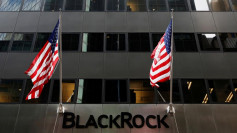Gold prices soared to unprecedented heights, marking a series of record-breaking highs, with the latest surge attributed to the Federal Reserve's indication of prospective rate cuts in 2024, despite persistent inflation concerns. On Thursday, spot gold climbed 1.1% to $2,209.65 per ounce, briefly touching a peak of $2,222.39, while U.S. gold futures experienced a significant increase of 2.4% to $2,212.40.
Analysts and market participants have closely monitored the Fed's monetary policy stance, with recent comments from Fed Chair Jerome Powell signaling a potential easing of interest rates by three-quarters of a percentage point by the end of 2024. This anticipation has bolstered gold's appeal, as lower interest rates typically enhance the attractiveness of non-yielding assets like gold by reducing the opportunity cost associated with holding them.
The Fed's dovish outlook has also influenced broader market dynamics, contributing to a weakening dollar and declining U.S. 10-year Treasury yields, further bolstering gold's position. Technical analysis suggests that spot gold may test resistance levels, potentially leading to further gains in the short term.
The bullish sentiment in gold markets is not solely driven by short-term trading dynamics but is underpinned by robust central bank buying and strong physical demand. Central banks, particularly in countries like China and Poland, have significantly increased their gold reserves, seeking to diversify their assets and mitigate geopolitical risks, notably those arising from the ongoing Russia-Ukraine conflict.
China's central bank emerged as the largest gold buyer in 2023, reflecting broader trends of robust consumer demand for gold within the country. Retail purchases of gold, including jewelry, bars, and coins, have also seen a notable uptick, with China surpassing India as the world's largest gold jewelry market. Consumer demand for gold in India remains substantial, driven by cultural and investment factors, particularly during the country's wedding season.
The geopolitical landscape, marked by uncertainties such as the Russia-Ukraine conflict and domestic political volatility in regions like Turkey, has further fueled demand for gold as a safe-haven asset. In Turkey, surging inflation and currency devaluation have propelled investors towards gold, seeking stability amidst economic turmoil.
As gold prices continue to navigate record territories, the confluence of central bank policies, geopolitical risks, and robust physical demand underscores the metal's enduring appeal as both an investment and a hedge against uncertainty. With expectations of further rate cuts and ongoing central bank purchases, the outlook for gold remains bullish, suggesting that the rally may extend well into the second half of 2024.






